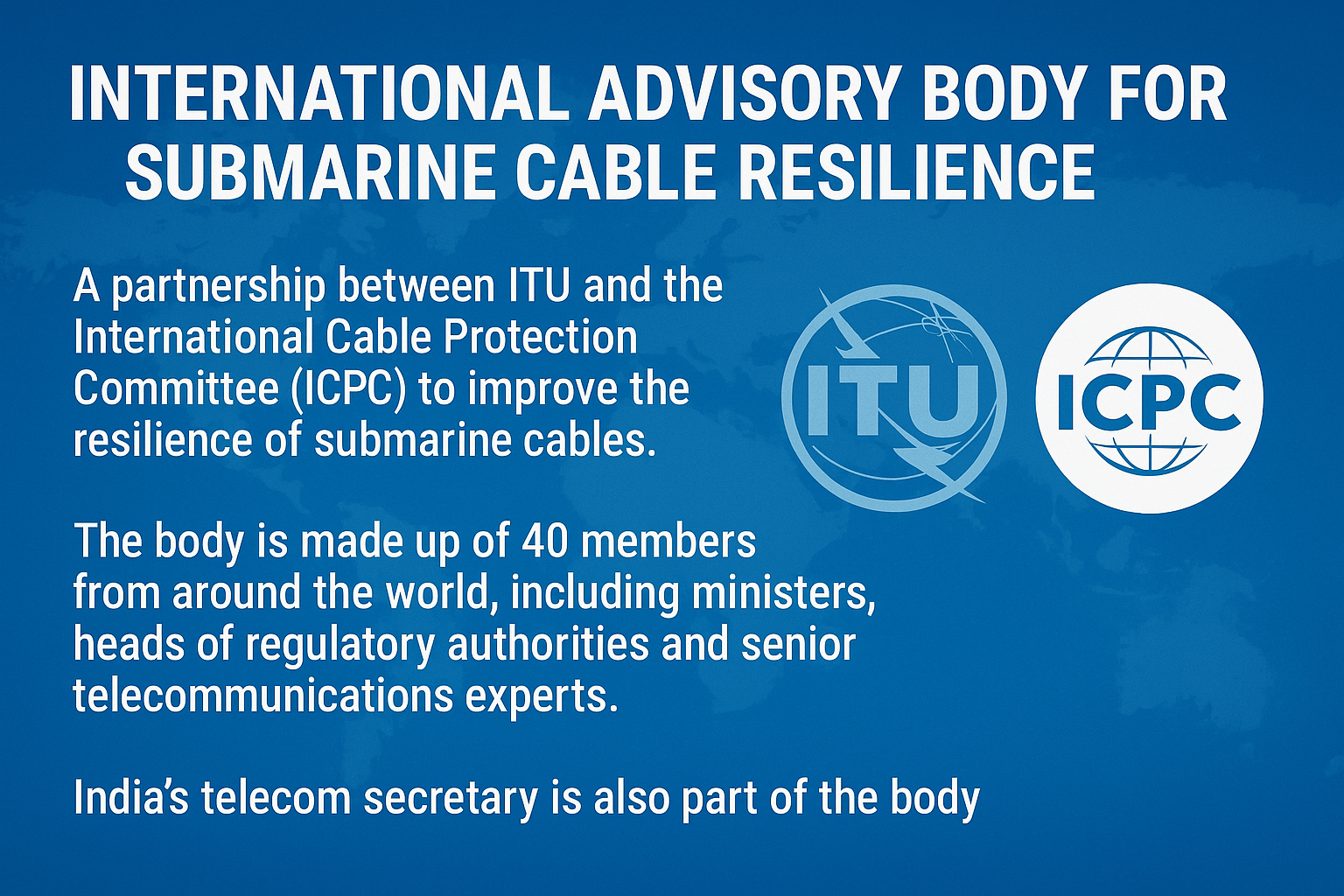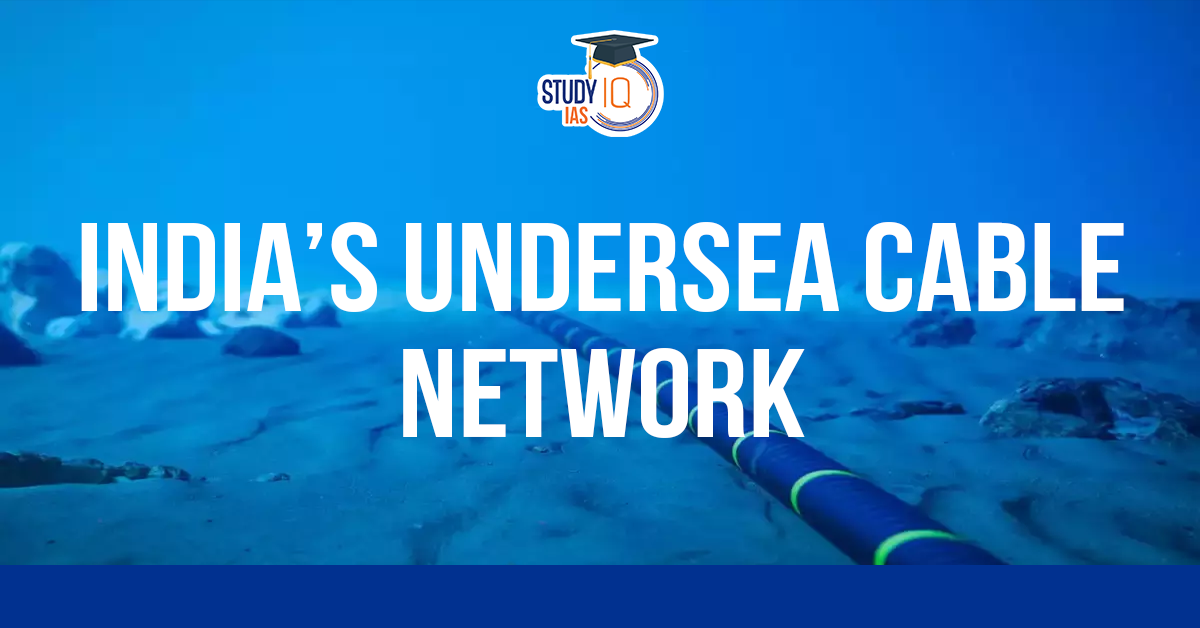Table of Contents
Context: India is expanding its internet infrastructure with new undersea cable systems. The latest addition is Airtel’s 2Africa Pearls system, adding 100 terabits per second of capacity to India’s international bandwidth.
What are Undersea Cable/Submarine Cables?
- Submarine Cables are fibre-optic cables that run along the ocean floor, carrying data between continents.
- They are the backbone of the global internet, responsible for the majority of international communications, including video calls, email and webpages.
- Significance of Under Sea Cables: 90% of data, 80% of world trade and $10 trillion in financial transactions depend on these cables.

Major Cable Landing Hubs
- Mumbai and Chennai are the two key locations for subsea cable landings.
- Versova, Mumbai, alone hosts 95% of India’s subsea cables within a 6-km stretch.
- 17 international subsea cables land in the country.
Expansion of India’s Undersea Cable Network
- India is enhancing its undersea cable network with two new systems, the India Asia Xpress (IAX) and the India Europe Xpress (IEX), set to launch in the next three months.
- The IAX will connect Chennai and Mumbai with Singapore, Thailand and Malaysia, while the IEX links these cities to France, Greece, Saudi Arabia, Egypt and Djibouti.
- These cables, over 15,000 kilometres in total length, are owned by Reliance Jio with investment from China Mobile.
Significance of Submarine Cables
- Submarine cables are vital for global communications, they carry over 99% of international internet traffic.
- They enable critical services such as commerce, financial transactions, government activities, digital health and education.
| International Telecommunication Union (ITU) |
|
Undersea Cables vs Satellite Internet
| Component | Undersea Cables | Satellite Internet |
| Latency | Offer ultra-low Latency (milliseconds) | Higher latency (especially for high-orbit satellites) |
| Reliability | Longer Lifespans (~25 years) | Exposed to space weather conditions (space debris, solar storms etc.) |
| Cost Considerations | Cheap and stable bandwidth per user | Higher costs per user (especially for high-speed data transmission) |


 Comprehensive Remote Sensing Observation...
Comprehensive Remote Sensing Observation...
 Perovskite Solar Cells, Objective and Ch...
Perovskite Solar Cells, Objective and Ch...
 Navy-Marine Expeditionary Ship Interdict...
Navy-Marine Expeditionary Ship Interdict...





















